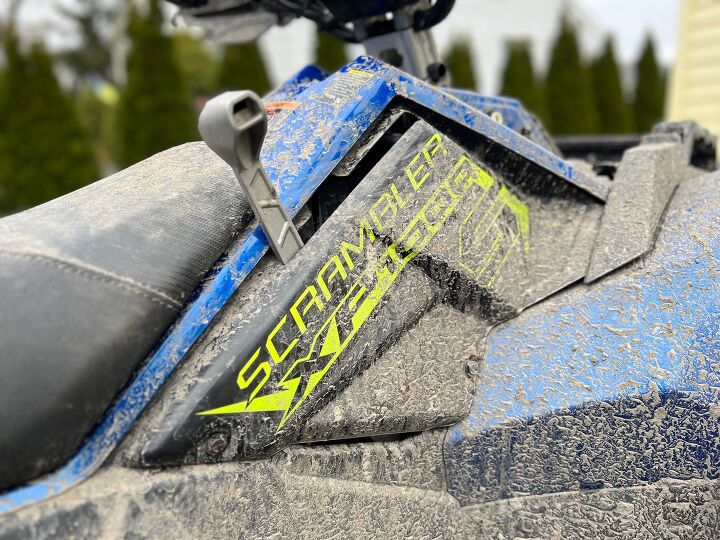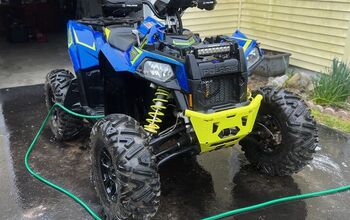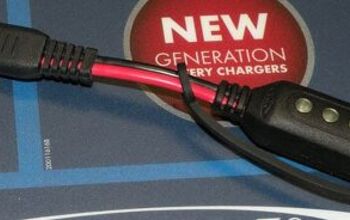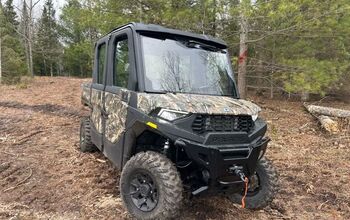Should You Wax Your ATV's Plastics?

It’s a no-brainer for automotive aficionados to wax their vehicle’s paint, but does that degree of care extend to your ATV? Seeing as cleaning up after a ride can easily entail a day’s worth of rinsing, scrubbing, and tidying up. Old four-wheeling folklore tells of spraying fenders with WD-40 or cooking oil spray to keep mud from caking on the machine, but we wanted to try out a less messy, more conventional method to see if we could achieve the same result. Does waxing your ATV’s plastics help? We found out firsthand.
Washing an ATV seems counterintuitive; the hobby does inherently revolve around getting dirty, after all. Mud, dirt, sand, and the various fluids and substances that machines can spew when ejecting what is supposed to stay in their mechanical confines are all those which can soil components that are happiest when kept clean. That’s right: Your ATV is at its best when it’s not covered in muck, despite what your inclination towards seeking out fun thinks. They’re more fun when they’re dirty, but all of these substances hamper the machine’s ability to best do its job, such as in the instances of axles, hub assemblies, brakes, driveshafts, steering components, and so on.
Washing a quad after a ride so as to best keep the vehicle in optimal operational condition is a small price to pay for a great day on the trail, in the woods, on the track, or wherever your favorite spot is, but what if you could spend less time doing cleanup? We wanted to find out, so we tried waxing the extreme fenders on our long-term Polaris Scrambler XP 1000 S, which so happens to have tires that extend out well beyond the wheelwells and are spectacular at throwing everything onto the big, bad quad’s bodywork. In an ideal world the mud and dirt would roll right off the Polaris’ plastics, so we wanted to try and figure out if we could make that happen.
To make this a somewhat thorough and valid test, we first thoroughly washed the machine with Chemical Guys car wash soap and then dried it with microfiber towels, just as we would a car, truck, or SUV. Satisfied but quietly sad about the absence of mud adorning the ATV, we then took Armor All’s spray wax and lathered a healthy dose onto exactly half of the bright blue plastics and yellow stickers, splitting the machine right down the middle. “Wax on, wax off” isn’t the move here-- the instructions simply say to spray the concoction onto the vehicle in question then wipe it away-- which is as easy in practice as it sounds. Naturally, the only subsequent step was to subject the Polaris to a variety of conditions to see if the dirt stuck to the quad the way it did prior to the wax application and this was all done in moot point, or if we found the magic move to trim down cleanup time.
Want to guess the results? We thought they would be predictable, and weren’t totally wrong. On the first stage of our first post-wax outing, water and lighter mud did bead up and roll off of the quad just as it does when the conversation is about a car or SUV. Some light-to-medium mud did even slide off the more vertically-oriented fenders, too, which was a nice surprise. But shortly after that the wax wasn’t doing anything. Wet trail conditions thanks to a wet season made for a constant barrage of mud, dirt, and so on layering every visible point on the Polaris, waxed or not. The wax was fighting a lost cause as soon as the initial layer of dirt and mud caked on and dried. This could be largely a factor of the mud particular to the Northeast, but these results would likely be somewhat consistent with the exception of maybe desert and muskeg conditions.
So in short, for traditional trail riding it doesn’t make sense to wax one’s ATV. Only the more obsessive need do so. However, there are and can be other benefits of doing so. Even any minor, incremental increase in protection against the elements can help prolong the life of one’s machine, especially in the instance of severely salty locations like dune riding. There’s also the aspect of considering the conditions many ATVs are subjected to when in winter or long-term storage, where they usually collect dust, pollen, and whatever other airborne particles may land on them. Waxing the quad can help repel these contaminants, keeping the machine in better condition longer. While waxing your ATV isn’t going to be the make-it-or-break-it difference between having to wash your quad to keep it clean or not, it’s one we recommend given how little time, effort, and money it takes.

Ross hosts The Off the Road Again Podcast. He has been in the off-road world since he was a kid riding in the back of his dad’s YJ Wrangler. He works in marketing by day and in his free time contributes to Hooniverse, AutoGuide, and ATV.com, and in the past has contributed to UTV Driver, ATV Rider, and Everyday Driver. Ross drives a 2018 Lexus GX460 that is an ongoing build project featured on multiple websites and the podcast and spends his free time working on and riding ATVs.
More by Ross Ballot































